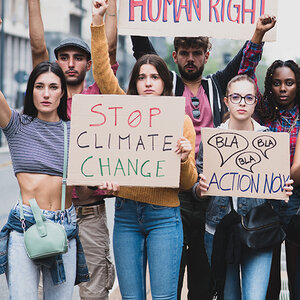Philanthropy can play crucial role on climate issues, report finds

Philanthropic capital has significant potential to maximize impact in climate and environmental issues, a report from the Milken Institute finds.
According to the institute, while climate disasters are on the rise, only about 2 percent of global philanthropic contributions are directed toward climate mitigation. Based on interviews with more than 50 experts and the institute’s ongoing climate and environmental work, the report, Priorities for Strategic Climate and Environmental Philanthropy (51 pages, PDF), offers recommendations for philanthropists to begin or expand funding for green initiatives.
According to the report, four key giving areas have emerged as both urgent and underfunded: deforestation; food systems, including livestock, regenerative agriculture, and food waste; oceans, including fisheries, maritime shipping, and coastal habitat conservation and restoration; and communications and outreach, including audience research and effective messaging, community and media engagement, and K-12 education.
In terms of setting a strategy for philanthropic funders, the report recommends breaking complex issues into addressable topics, not trying to check too many boxes, funding and using data, prioritizing long-term funding over short-term wins, and considering the full range of philanthropic financial models. In terms of operating an ecosystem, the report recommends combining and amplifying philanthropic efforts whenever possible, sharing learning with others, not assuming the needs or wishes of people with a shared material interest in a particular issue or project, cultivating partnerships that strengthen capacity, and balancing perspectives.
“For every year we wait to act, it’s 7 to 8 percent compounded progress lost,” Project Drawdown executive director Jonathan Foley told the Milken Institute.
(Photo credit: Getty Images/George Clerk)








